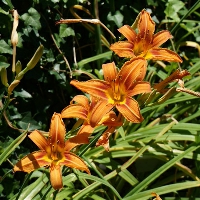Chongqing Longmenhao Vocational School was founded in 1965. Vocational education was opened in 1982. In 2000, it became the first national key secondary vocational school, a national demonstration secondary vocational school, and won the honorary title of "Advanced Collective in the National Education System".
The school is a Sino Australian vocational education and training project school, a key project experimental school of the Ministry of Education, Science and Planning, a civilized unit in Chongqing, an advanced education collective in Chongqing, and a pilot school for strategic development research of secondary vocational education in Chongqing. It is a national computer application and software technology training base, a national electrician and electronics training base, a national information technology vocational ability training center, a vocational education training base planned and constructed in Chongqing, a teaching and research experimental base of Chongqing education research institutes, a rural labor transfer training base in Chongqing, a training base for the disabled in Chongqing Nanbin Road Catering Standardization Service Training Base. It has the national vocational skill appraisal station and the national computer information technology test station, and has successively won the first prize of excellent education and scientific research achievements of Chongqing vocational schools and the first prize of the first primary and secondary education achievements of Chongqing
The school is located in Nan'an Tea Garden New Area, with a campus area of 129800 square meters. There are 310 teaching staff and more than 6500 students in academic education. Every year, more than 3000 social personnel are trained. The school has four departments, namely, the Information Department, the Mechanical and Electrical Department, the Tourism Management Department, and the Art Design Department. They are electronic and information technology, automobile manufacturing and maintenance, numerical control technology, and telecommunications operation services Application of IoT technology, installation and maintenance of electromechanical equipment; Air tourism, preschool education, operation and management of high star hotels, and operation and management of urban rail transit; There are 19 majors in painting, arts and crafts, and clothing design, and the total amount of professional teaching equipment is 25.192 million yuan.
The school's teaching quality has achieved remarkable results. Teachers and students have won 108 international, gold and silver awards and 3223 national, provincial and municipal awards in international competitions. The supply of graduates in all majors exceeds the demand. The employment rate of qualified students has reached 100%. For 13 consecutive years, the number of college entrance examination students ranked first among similar schools in the city, with 4876 students.
The school follows the connotative development path, adheres to the school running philosophy of "integrity of people and industry", adheres to the school running direction of "service as the purpose, employment as the guidance, ability as the standard, and quality as the core", forms the development idea of scale, connotative development, and quality improvement, and constructs the integrated development model of engineering and learning to create a pioneering, enterprising Seeking truth and innovation Long Vocational School keeps forging ahead with a new attitude and strives to build a professional, information-based and internationalized modern vocational school.

